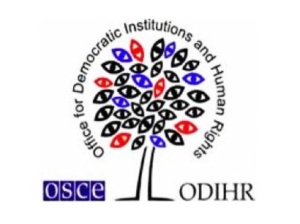 On 1 October the ODIHR Election Observation Mission for the forthcoming presidential election in Azerbaijan published its second interim report which covers the period from 12-26 September 2013.
On 1 October the ODIHR Election Observation Mission for the forthcoming presidential election in Azerbaijan published its second interim report which covers the period from 12-26 September 2013.
The report notes that “the official campaign began on 16 September and while it has been generally calm, it has been marred by some reported incidents of intimidation of family members of political figures. To date, the campaign has lacked substantive debate and has focused on personality rather than concrete political platforms.
It said that the Mission has monitored 21 campaign rallies so far. The CEC published a list of 152 indoor and outdoor venues designated for presidential election campaign events. Although allocated in line with the law, some candidates consider these venues to be unsatisfactory for holding public events.
Technical preparations for the election continue at all levels of the election administration, with the CEC meeting legal deadlines and training some 32,000 polling officials. Voters can vote at 5,273 regular and 219 special polling stations in-country, as well as at 38 polling stations abroad.
As of 14 September, the total number of registered voters was 5,016,365, an increase of some 30,000 since the May annual update. The CEC received and processed some 4,000 requests for verification of voter list entries online or through their telephone hotline. The CEC informed the OSCE/ODIHR EOM that more than 4,400 de-registration voting cards have been issued to absentee voters so far.
The CEC has allocated six hours of free airtime on public television and radio to candidates per week. Two candidates objected to the roundtable format for the free airtime. Following the 19 September televised candidate roundtable, the CEC issued a ‘serious’ warning to candidate Jamil Hasanli for violating Article 106 of the Constitution by insulting the honour and dignity of the President and members of his family.
The ODIHR report says that “Restrictive legal provisions and a subsequent call by the CEC not to publish or broadcast any campaign material in favour or against a candidate appear to have limited the editorial coverage of the campaign in the media. The OSCE/ODIHR EOM media monitoring results for the pre-campaign period indicate that the incumbent President received a much greater amount of coverage in news programmes on television in comparison to other political actors.”
The full report is available at http://www.osce.org/odihr/elections/106275